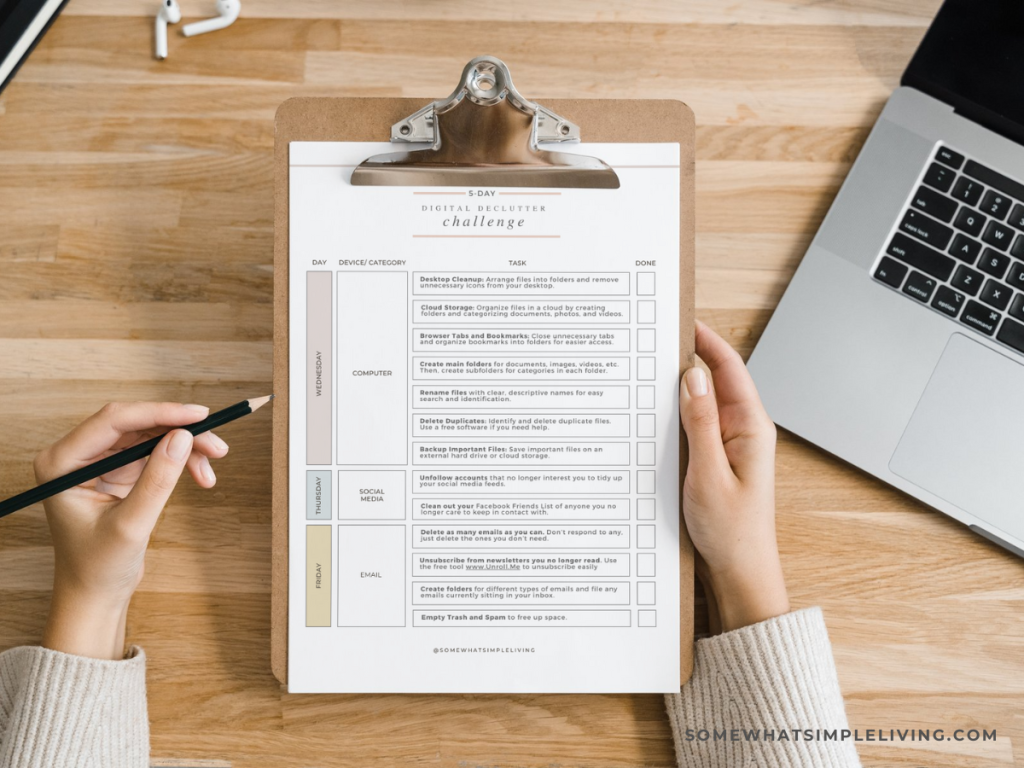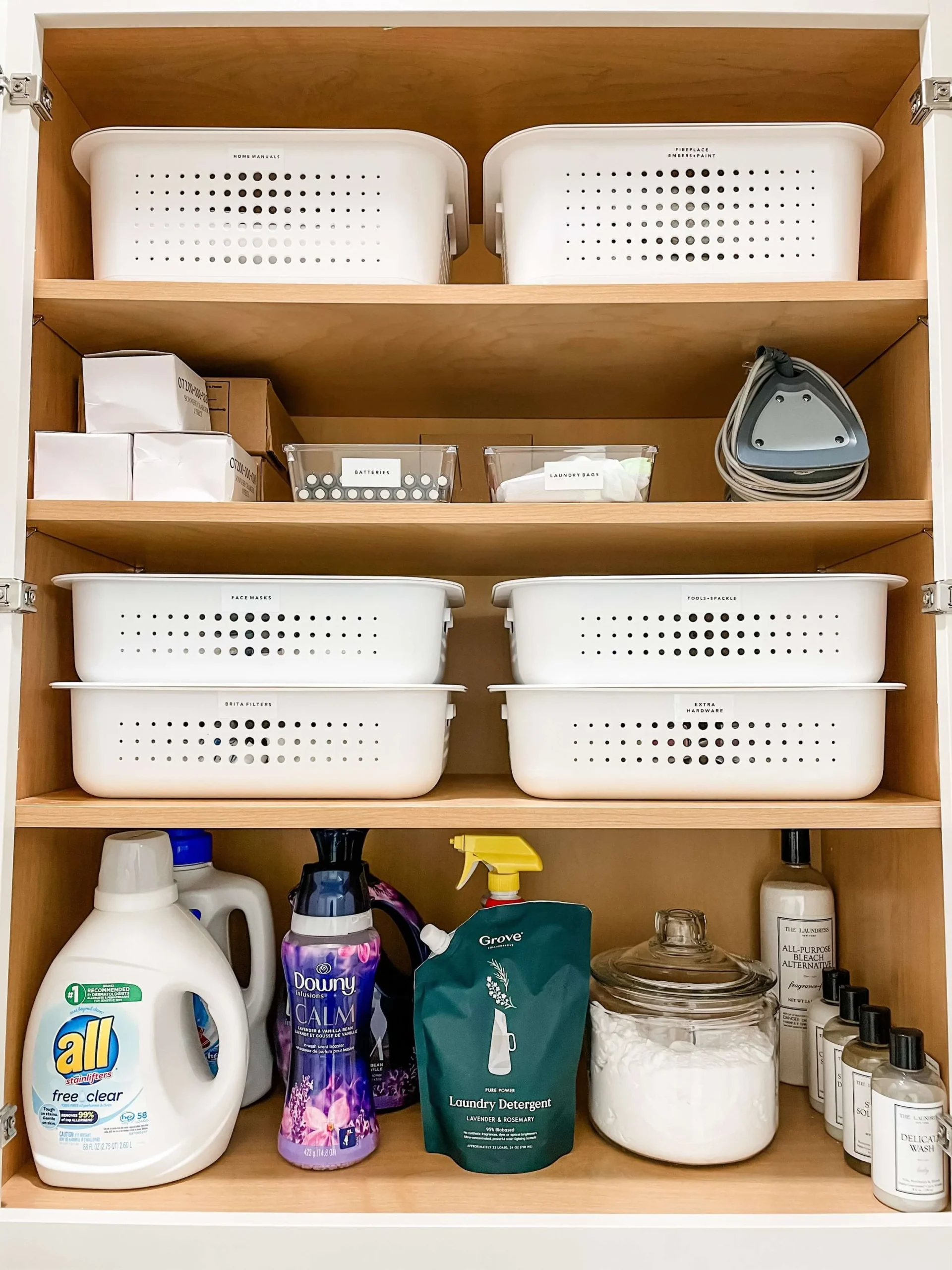Decluttering Digital: How to Organize Your Devices and Improve Your Productivity

The Digital Chaos Challenge
As we navigate through the complexities of modern life, the digital realm increasingly mirrors the clutter of our physical environments. With the proliferation of technology, our devices—smartphones, tablets, and computers—have become repositories for not only our vital information but also a myriad of distractions. The pervasive issue of digital clutter arises from various factors, ultimately impacting our productivity and overall well-being.
One of the major culprits contributing to this chaos is incessant notifications. Whether it’s social media alerts, app updates, or news briefings, the constant barrage of notifications can pull our attention in multiple directions. Studies have shown that repeated interruptions can lower productivity by up to 40 percent. This means that each ping can derail your focus, leaving you scrambling to regain your train of thought. To combat this, consider establishing “do not disturb” periods throughout your day, where notifications are silenced, allowing you to concentrate fully on your tasks.
Unsorted files add another layer of complexity to the digital clutter dilemma. Picture this: you’re searching for an important document buried in a folder populated by random items accumulated over time. This disorganization not only wastes your time but can lead to frustration and decreased efficiency. Programs like cloud storage—think Google Drive or Dropbox—offer excellent solutions by allowing you to categorize and easily search for files. Creating a logical folder structure, perhaps by project or date, enhances your ability to find crucial information swiftly, leading to more productive work sessions.
Then, there are overloaded applications that not only consume precious storage space but also contribute to decision fatigue. The average smartphone user has around 80 apps installed but frequently uses less than a quarter of them. This abundance can lead to indecision—spending more time contemplating which app to use than actually carrying out the task at hand. Streamlining your applications by removing those you seldom use can simplify your choices and increase your device’s performance, making for a smoother user experience.
Therefore, by taking decisive steps to declutter your digital environment, you stand to gain multiple benefits. First, enhanced focus arises from a streamlined interface devoid of unnecessary distractions. Next, your efficiency will significantly improve; quickly locating files or launching applications means less downtime and more time dedicated to meaningful work. Finally, achieving a digital clean-up can reduce stress significantly, leading to a clearer mindset. A tidy workspace—both physical and digital—fosters creativity and allows for a more organized flow of ideas.
This article will delve deeper into actionable strategies and expert tips that can help you regain control over your digital life. By embracing a systematic approach to decluttering your devices, you are investing in a more productive future. Stay tuned as we explore practical steps that can lead you to digital liberation—and your future self will undoubtedly be grateful.
DISCOVER MORE: Click here to learn about the power of digital detox
Taking Stock: Understanding Your Digital Clutter
Before diving into decluttering, understanding the nature and extent of your digital clutter is imperative. Identifying the root causes of your disorganization can shed light on how to effectively address them. Consider conducting a comprehensive audit of your devices, examining everything from files and applications to storage systems. By doing so, you can gain insights into which areas require the most attention and develop a tailored strategy to restore order.
First, focus on your file management. Many individuals find themselves with an overwhelming number of files that are scattered haphazardly across various folders. According to a study by McKinsey & Company, employees spend an average of 28% of their workweek managing emails, files, and other documents. This staggering statistic underscores the necessity of effective file organization. Begin by creating a consistent naming convention. This practice not only facilitates easier searches but also brings a uniformity that aids in navigation.
Next, consider the applications on your devices. A staggering 70% of smartphone users report feeling overwhelmed by application choices. To alleviate this burden, it’s essential to conduct a “digital spring clean.” Start by uninstalling apps that you haven’t used in the past month. Additionally, organize your remaining apps into folders based on functionality—such as productivity, social media, or entertainment—to streamline access. The less time spent scrolling through a cluttered app drawer, the more time you can dedicate to executing your tasks with precision.
Navigating Your Data: The Folder Structure
Establishing a coherent folder structure can vastly improve your efficiency. Here are several practical tips for creating a folder system that works for you:
- Project-based folders: Create folders for various projects or clients. This allows for quick access to relevant documents, minimizing time wasted searching.
- Chronological organization: Consider organizing files by date. Such structure is particularly useful for ongoing projects that evolve over time.
- Utilization of tags: If your device or file system allows it, tag files with keywords. This makes sorting and searching remarkably efficient.
Furthermore, don’t overlook the importance of your email inbox. A cluttered email account can serve as a significant distraction. Start by unsubscribing from newsletters and promotional emails that no longer serve you, and implement folders or labels for essential correspondence. By maintaining an organized digital inbox, you pave the way for clearer communication and enhanced productivity.
As you work through these steps, remember that the process of decluttering digital spaces is ongoing. Regular maintenance is key to preventing digital chaos from creeping back in. Schedule routine audits and adjustments to your digital systems, ensuring that you remain in control of your devices rather than being controlled by them.
In summary, a comprehensive understanding of your digital clutter is the first step toward improvement. By implementing these organizational strategies, you not only free up mental bandwidth but also enhance your productivity, setting the stage for more focused and effective work sessions.
| Category | Key Benefits |
|---|---|
| Digital Organization | Enhanced focus and efficiency in accessing files. |
| Time Management | Reduction of time spent searching for digital assets or applications. |
Understanding how to effectively declutter your digital space is essential in today’s fast-paced world. By implementing a strategic digital organization system, you can reduce distractions that hinder productivity. This approach encourages better focus by allowing quick access to essential documents and applications, which is increasingly becoming a necessity for anyone juggling multiple tasks or projects. Moreover, enhancing your time management skills can drastically improve your daily workflow. Studies show that individuals can waste significant time hunting for files in disorganized setups, leading to frustrating delays. Thus, a clear and coherent digital environment aids in streamlining your tasks, allowing for smoother daily operations and providing more opportunities to engage in high-priority projects.As you explore these themes further, consider how each aspect contributes not only to productivity but also to a healthier digital lifestyle, where technology supports rather than hinders your personal and professional growth.
DISCOVER MORE: Click here for insights
Streamlining Your Digital Workflow
Once you’ve established a solid foundation for managing files, applications, and email communications, the next step is to focus on streamlining your digital workflow. Implementing effective practices can greatly enhance your productivity and minimize distractions. Start by leveraging automation tools and services to take repetitive tasks off your plate. According to Zapier, automating even a few routine tasks can save employees up to 10 hours a week. This time savings translates to more time for creative and critical thinking.
Consider utilizing tools like Ifttt (If This Then That) or Zapier to connect different applications and automate operations. For example, you can automate your social media posts or set reminders for upcoming deadlines. With various integrations available, these platforms can help you reduce manual labor and enhance data/input flow across your tools.
Implementing Best Practices for Digital Hygiene
To maintain a streamlined digital workflow, adopt a systematic approach to digital hygiene. Here are key practices that can help you stay organized:
- Daily Reviews: Set aside a few minutes at the end of each day to review completed tasks, clear out your digital workspace, and organize any new files that have accumulated. This simple habit can curb the buildup of clutter and ensure you start each day fresh.
- Utilize Cloud Storage: Leverage cloud storage solutions such as Google Drive, Dropbox, or OneDrive for file management. These platforms not only provide secure backups but also allow for streamlined collaboration, making accessing files from any device a breeze.
- Version Control: Keep track of file versions, particularly for projects in progress. Utilizing tools like Git for version control can ensure that you always access the latest updates while maintaining a clear historical record of changes.
In addition to managing files and applications, consider the structure of your digital notes. With tools like Evernote or Notion, you can create a unified system for capturing and organizing notes related to projects, ideas, or meetings. Using a consistent tagging system aids in quickly locating needed information and ensuring that nothing of value gets lost amidst the digital noise.
Exploring Minimalism in Digital Spaces
Embracing a minimalist approach to your digital landscape can also lead to significant productivity enhancement. Research from the University of California suggests that simplifying your digital environment can positively impact decision-making and enhance focus. Begin by evaluating the content within your bookmarks and browser history. Resources like Raindrop.io can assist you in curating bookmarks by allowing you to categorize and tag them effectively, ensuring easy access while avoiding a jumbled, overwhelming list.
Moreover, consider the role of notifications in your daily digital routine. Studies show that excessive notifications can lead to attention fatigue and decreased productivity. Customize notification settings across your devices and applications, opting for only essential alerts that require immediate attention. This way, you can cultivate an environment that promotes focus and helps minimize distractions.
As you venture further into decluttering your digital environment, remember that transforming your digital workspace is a gradual process that necessitates ongoing efforts. Establishing organized systems, adopting best practices, and continually refining your digital landscape can significantly boost your productivity and ultimately, your overall work experience.
DISCOVER MORE: Click here to learn how simplicity can enhance your space
Conclusion: Embracing a Clutter-Free Digital Future
In an increasingly digital world, where our devices hold mountains of information, mastering the art of decluttering digital spaces is not just a desirable skill but a necessity for anyone looking to enhance their productivity. As we explored throughout this article, taking proactive steps such as organizing files, automating mundane tasks, and adhering to best practices for digital hygiene can create a more streamlined workflow that empowers you to focus on what truly matters.
Moreover, the minimalist approach to your digital landscape, championed by experts, reveals a surprising benefit: simplifying your online presence can sharpen decision-making and bolster concentration. By evaluating what is truly necessary and cutting out excess information, you can cultivate a workspace that fosters creativity and efficiency.
As you embark on the journey of digital decluttering, always remember that change doesn’t happen overnight. Regularly revisiting and refining your systems will solidify habits that promote a clutter-free environment. Whether it’s customizing your notifications or leveraging software for version control, the tools at your disposal can significantly impact your daily productivity. With just a few adjustments, you can transform your devices into seamless, productive ecosystems.
In conclusion, take the first step today by implementing the strategies discussed and experience how decluttering your digital space leads to newfound clarity and efficiency. Your future self will thank you for it.


